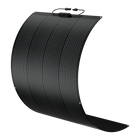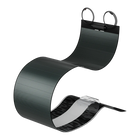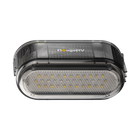18 Helpful Tips to Stay Warm in a Tent in the Winter


If you love camping, you don't have to let the cold weather stop you from enjoying the great outdoors. With preparation and planning, you can stay warm and cozy in your tent even when the temperature drops below freezing.
In this blog post, we will share 18 helpful tips to stay warm in a tent in the winter, from choosing the right tent and campsite to using portable heaters and hot water bottles.
We will also answer some frequently asked questions about winter camping, such as what temperature is too cold for tent camping and how to survive a cold night in a tent without a heater or electricity, etc.
So, let's get started!
18 Helpful Tips to Stay Warm in a Tent in the Winter
Tent camping in the winter can be a rewarding and refreshing experience. You can enjoy the beauty and tranquility of nature without the crowds and bugs. You can also witness some amazing sights, such as snow-covered landscapes, frozen lakes, and starry skies.
However, camping in the winter also comes with some challenges, especially when it comes to staying warm in your tent. The last thing you want is to spend a miserable night shivering and unable to sleep because of the cold. That's why you need to know how to keep yourself and your tent warm in the winter.
Here are 18 tips that will help you stay warm and comfortable in your tent during the winter months.
1. Choose the Right Tent
Choosing the right tent is crucial for staying warm during winter camping.
Smaller tents are warmer than larger tents as they have less air space to heat up and retain more body heat. However, ensure it's spacious enough to house you, and your gear, and allow comfortable movement without compromising ventilation, which prevents condensation.
Dome-shaped tents are more stable and aerodynamic than cabin-style tents, which have flat roofs and walls that can catch the wind and collapse under heavy snow. They also have less surface area exposed to cold air, which means less heat loss.
Nylon and polyester are common materials for winter tents, as they are lightweight, strong, and resistant to moisture. However, they are not very good at insulating heat, so you need to pair them with a good flysheet or tarp that covers the entire tent and creates an air gap between the inner and outer layers, which prevents heat from escaping through the fabric.
You should also choose a vent that has enough vents or mesh panels that allow air circulation without letting too much cold air in. You can also use a fan or slightly open a window to create airflow.
2. Properly Set Up Your Tent on a Good Campsite

Choosing a good campsite and properly setting and pitching your tent tightly can make a big difference in how well it protects you from the elements. Here are some tips on how to set up your tent on a good campsite:
-
Location: Set up your tent behind a hill, a tree line, or a rock formation. Avoid low-lying areas that can collect cold air or water, such as valleys, depressions, or river banks. Also avoid setting up a tent in exposed areas that can be hit by strong gusts or snow drifts, such as ridges, peaks, or open fields.
-
Orientation: Orient your tent so that the door faces away from the prevailing wind direction. This will prevent cold air from entering your tent when you open or close the door. It will also reduce the wind resistance and noise of your tent.
-
Ground: Clear the ground of any snow, ice, rocks, or debris before setting up your tent. This will create a smooth and level surface for your tent and prevent any cold or sharp objects from puncturing your tent or sleeping pad. You can also use a shovel or a snowshoe to compact the snow and create a firmer and warmer base for your tent.
-
Stakes: Secure your tent with stakes or anchors that are suitable for the ground condition. In soft or loose snow, you can use snow stakes, deadman anchors, or even skis or poles to anchor your tent. In hard or frozen ground, you can use regular stakes, nails, or screws to anchor your tent. Check and tighten your stakes regularly, as they can loosen or shift due to wind or temperature changes.
-
Guy lines: Use guy lines to tension and stabilize your tent against the wind and snow.
3. Vent Your Tent
Venting your tent is crucial for preventing condensation and moisture buildup inside your tent, which can make you feel colder and wetter.
You can open some vents or mesh panels on your tent, or by slightly opening a window or door. However, don't want to open too much, as this can let too much cold air in and cause heat loss. You also want to avoid creating any drafts that can blow directly on you or your sleeping bag.
4. Insulate Your Tent With Rugs or Mats
Rugs or mats can add an extra layer of insulation between you and the cold ground, as well as between you and the cold air. They can also make your tent more comfortable and cozy by adding some cushioning and softness.
You can use any kind of rugs or mats that are thick, fluffy, and water-resistant, such as wool rugs, fleece blankets, foam mats, yoga mats, or even car mats. You can place them on the floor of your tent, under your sleeping pad, over your sleeping bag, or even on the walls or ceiling of your tent. The more rugs or mats you use, the warmer and cozier your tent will be.
5. Use Portable Tent Heaters
Portable heaters can provide instant and consistent heat for your tent, as well as light and ambiance. They can also help reduce condensation and moisture buildup inside your tent by warming up the air.
While not all heaters are safe or suitable for tents.
Gas heaters release emissions, and odors and can cause fire hazards, you should only use them in well-ventilated tents and turn them off before going to sleep.
Instead, electric camping heaters are safer and don’t produce any harmful gas. Using a reliable power source, for example, BougeRV’s portable power station, you can run the electric heater and stay warm and cozy even if you are in remote places.
Read more: Can a Portable Power Station Run a Heater?
6. Dress in Layers

You can dress in layers and adjust your layers according to the temperature and your activity level. Wear more layers when you are sleeping or resting, and less when you are hiking or cooking.
The most important layer is the base layer, which is the one that touches your skin. So, choose a base layer that is made of synthetic or wool material, as these fabrics wick moisture away from your body and dry quickly. You can sleep in the base layers you plan to wear the next day. By the way, don’t wear a cotton base layer, as it absorbs sweat and makes you feel colder.
When it comes to the mid-layer that provides extra warmth and insulation, you can choose a fleece, a sweater, or a down jacket for this layer. Ensure the mid-layer is loose enough to allow air circulation, but not too bulky to restrict your movement.
The outer layer protects you from wind, rain, and snow. You should choose a shell layer that is waterproof, breathable, and durable. Opt for a shell layer that has a hood, cuffs, and zippers so that you can adjust to regulate your body temperature.
7. Get Out of Sweaty Clothes
Sweaty clothes will make you feel cold and uncomfortable, especially when the temperature drops at night. You should pack an extra base layer that you can change into before going to bed. This will keep you dry and cozy throughout the night.
Never sleep in wet clothes, as they will reduce the effectiveness of your sleeping bag and make you lose body heat faster. If your clothes are wet, you can try to dry them by hanging them inside your tent or near a fire. You can also use a portable dryer or a hairdryer if you have access to electricity.
8. Hand Warmers, Heated Gloves, Heated Boots, Neck Warmers,
Use hand warmers, heated gloves, heated boots, neck warmers, or other accessories that can provide extra heat to your body. These items can be battery-powered, electric, or chemical-based, and they can last for several hours. If you prefer electric ones, remember to bring along a reliable portable power station to recharge these accessories.
Place hand warmers inside your gloves, pockets, socks, or sleeping bag to keep your hands and feet warm. Wear heated gloves or boots that have built-in heating elements that you can control with a switch or a remote. Wrap a neck warmer around your neck or face to prevent heat loss from your head.
These accessories are handy if you suffer from fingers and toes turning white or blue when exposed to cold temperatures.
9. Bring an Extra Blanket

You can use blankets to cover yourself, wrap them around your sleeping bag, or place them under your sleeping pad for extra insulation. Blankets can also be used to cover the tent floor or the windows to reduce heat loss.
Some of the most popular types of blankest for tent camping are:
-
Mylar blanket: This is a thin, lightweight, and reflective blanket that can reflect up to 90% of your body heat back to you. It’s also waterproof and windproof, making it ideal for emergencies.
-
Electric blanket: This is a blanket that has heating elements inside it that can be plugged into a power source or a battery pack. Electric blankets can provide adjustable and consistent warmth throughout the night, keeping you stay warm overnight.
10. Layer up a Sleeping Bag and Quilt
Layering up a sleeping bag and quilt creates two layers of insulation to keep you warm in your tent.
You can put the quilt inside the sleeping bag, or put the sleeping bag inside the quilt. The former option may be more comfortable and cozy, while the latter option may be more spacious and breathable.
11. Two Insulated Sleeping Pads or Mats Are Better Than One
Using two insulated sleeping pads or mats is one more helpful way to stay warm in a tent in the winter. To use two insulated sleeping pads or mats, you can either stack them on top of each other or place them side by side.
Sleeping pads or mats are cushioned surfaces that you place under your sleeping bag to provide comfort and insulation from the cold ground. Use sleeping pads or mats rated for high R-values that can effectively resist heat loss. You can also look for sleeping pads or mats with air chambers, foam cores, or reflective materials, which enhance their insulation and comfort.
12. Wear a Balaclava to Bed
A balaclava can help you stay warm in a tent in the winter by preventing heat loss from your head, which accounts for about 10% of your body heat. It can also protect your face and neck from frostbite, windburn, or dryness caused by the cold air. To wear a balaclava to bed, you can either wear it under or over your sleeping bag hood.
13. Build a Campfire

A campfire provides radiant heat that warms up the air around your tent. It can also help circulate the warm air inside your tent. Moreover, it can dry out any moisture or condensation that may form on your tent walls or ceiling.
14. Heat Rocks
Place the rocks around the fire, making sure they are not too close to the flames or too far away. When the rocks are hot to the touch, carefully move the rocks from the fire to your tent, using gloves, tongs, or a shovel.
You can place the rocks near your feet or torso or under your sleeping pad for extra warmth. Wrap the rocks in towels or blankets to prevent them from burning your tent or sleeping bag.
15. Eat & Drink a Lot
Eating and drinking can help you generate body heat and keep your metabolism high. You should eat high-calorie foods that are rich in fat, protein, and carbohydrates, such as nuts, cheese, chocolate, dried fruits, granola bars, and jerky.
Besides, drink plenty of fluids, especially hot drinks like tea, coffee, cocoa, or soup. Hot drinks can warm you up from the inside and prevent dehydration. So, it’s a good idea to take suppliers to make hot drinks, for example taking a coffee maker to make a hot cup of coffee.
Read more: Can A Portable Power Station Run A Coffee Maker?
16. Take a Hot Water Bottle
A simple and effective way to stay warm in a tent is to take a hot water bottle with you.
You can fill the hot water bottle with hot water and use it as a source of heat, placing the bottle inside your sleeping bag, near your feet or chest, or wherever you feel cold. The bottle will radiate heat throughout the night and keep you cozy.
17. Bring Heat Packs
Heat packs are small packets that produce heat when activated. You can simply activate them by shaking them or exposing them to air
Place them inside your gloves, socks, pockets, or sleeping bag, you can instantly feel the warmth. Heat packs are disposable and last for several hours.
18. Test Your Gear
If cold-weather camping is new to you, jumping into an extended trip with freezing temperatures might not be the best move. So, it’s better to ease into it with a brief overnight campout when the temperature hovers between 40 and 50 degrees Fahrenheit.
By trying out your camping equipment in gradually cooler conditions, you can tweak things as you go, rather than facing tough and possibly hazardous lessons all at once.
What Temperature Is Too Cold for Tent Camping?

Most people can comfortably camp in temperatures above freezing (32°F or 0°C) with proper gear and preparation.
However, some experienced campers can camp in temperatures below freezing (even below zero) with specialized gear and skills. If you are not sure about your ability to camp in cold weather, it is better to be safe than sorry and avoid camping in extreme conditions.
How Do You Survive a Cold Night in a Tent?
Surviving a cold night in a tent is not impossible if you follow some basic tips:
- Choose the right tent for the season and weather
- Set up your tent properly on a good campsite
- Ventilate your tent to prevent condensation
- Insulate your tent with rugs or mats
- Use portable tent heaters if possible
- Dress in layers of warm clothing
- Get out of sweaty clothes and pack an extra base layer
- Use hand warmers, heated gloves, heated boots, neck warmers,
- Bring an extra blanket or mylar blanket
- Layer up a sleeping bag and quilt
- Use two insulated sleeping pads or mats
- Wear a balaclava to bed and sleep in the base layers you plan to wear the next day
- Build a campfire and heat rocks
- Eat and drink a lot of high-calorie foods and hot drinks
- Take a hot water bottle or heat packs
- Test your gear before you go camping
- Pack some extra gear for emergencies
How to Stay Warm in a Tent Without Electricity?
Though you don’t have access wall outlet while tent camping in cold winter, you can stay warm by using a portable power station or solar generator to run a portable electric heater, electric blanket, or electric kettles.
Alternatively, you can still use non-electric methods, such as:
- Choosing a smaller tent that is easier to heat up
- Setting up your tent on a sunny spot or near a natural shelter
- Ventilating your tent to prevent moisture buildup
- Insulating your tent with rugs, mats, or tarps
- Dressing in layers of warm clothing and accessories
- Using a warm sleeping bag and quilt
- Using two insulated sleeping pads or mats
- Using a hot water bottle or heat packs
- Building a campfire and heating rocks
How Can I Keep My Tent Warm Without a Heater?
It’s possible to keep your tent warm without a heater if you use some alternative methods, such as:
- Choosing a smaller tent that is easier to heat up
- Setting up your tent on a sunny spot or near a natural shelter
- Ventilating your tent to prevent moisture buildup
- Insulating your tent with rugs, mats, or tarps
- Dressing in layers of warm clothing and accessories
- Using a warm sleeping bag and quilt
- Using two insulated sleeping pads or mats
- Using a hot water bottle or heat packs
- Building a campfire and heating rocks
Final Thoughts
With the 18 tips provided, you can transform your chilly outdoor adventure into a cozy retreat. Stay warm, stay safe, and enjoy the winter wonderland that awaits outside your tent's canvas walls.
Be well-prepared with more camping essentials and embrace the serenity of cold-weather camping!
FAQs
1. Do Rocks Hold Heat?
Yes, rocks can hold heat and release it slowly over time. So, you can use heated rocks to warm up their tents. However, you need to be careful when choosing and handling rocks for this purpose.
Some rocks may crack or explode when exposed to high temperatures, especially if they are wet or have air pockets. Besides, You should also use gloves or a cloth to avoid burning yourself or your tent.
2. Will Sleeping in a Tent Keep You Warm?
Sleeping in a tent can keep you warm if you're prepared. Choose the correct season-rated tent, invest in a quality sleeping bag, use an insulated pad, and wear appropriate layers. These essentials, along with body heat, will enhance warmth.
Proper gear and smart camping strategies are key to a cozy night's sleep outdoors. Stay snug by prepping for the climate and using these tips to retain heat in your tent.
3. How Cold Is Too Cold to Sleep Outside Without a Tent?
Sleeping outside without a tent in temperatures below 50°F (10°C) can be uncomfortable and potentially risky without proper gear. Exposure to colder temperatures increases the risk of hypothermia, especially if you're not insulated or if conditions are damp.
Always prioritize well-rated sleeping bags, insulated pads, and adequate clothing layers to maintain body heat when braving the elements. Stay informed and gear up for safety while embracing outdoor adventures.
3. How Can I Keep My Tent Warm Without a Sleeping Bag?
To keep warm in a tent without a sleeping bag, layer clothing, and use an insulated sleeping pad. Employ a mylar blanket to reflect body heat, stuff clothes around you for extra insulation, and wear a beanie to retain head warmth.
Heat water bottles and tuck them in at your feet. Consider a high-quality tent with a lower mesh ratio to reduce airflow. Stay cozy with these effective, no-sleeping-bag-needed strategies.









































